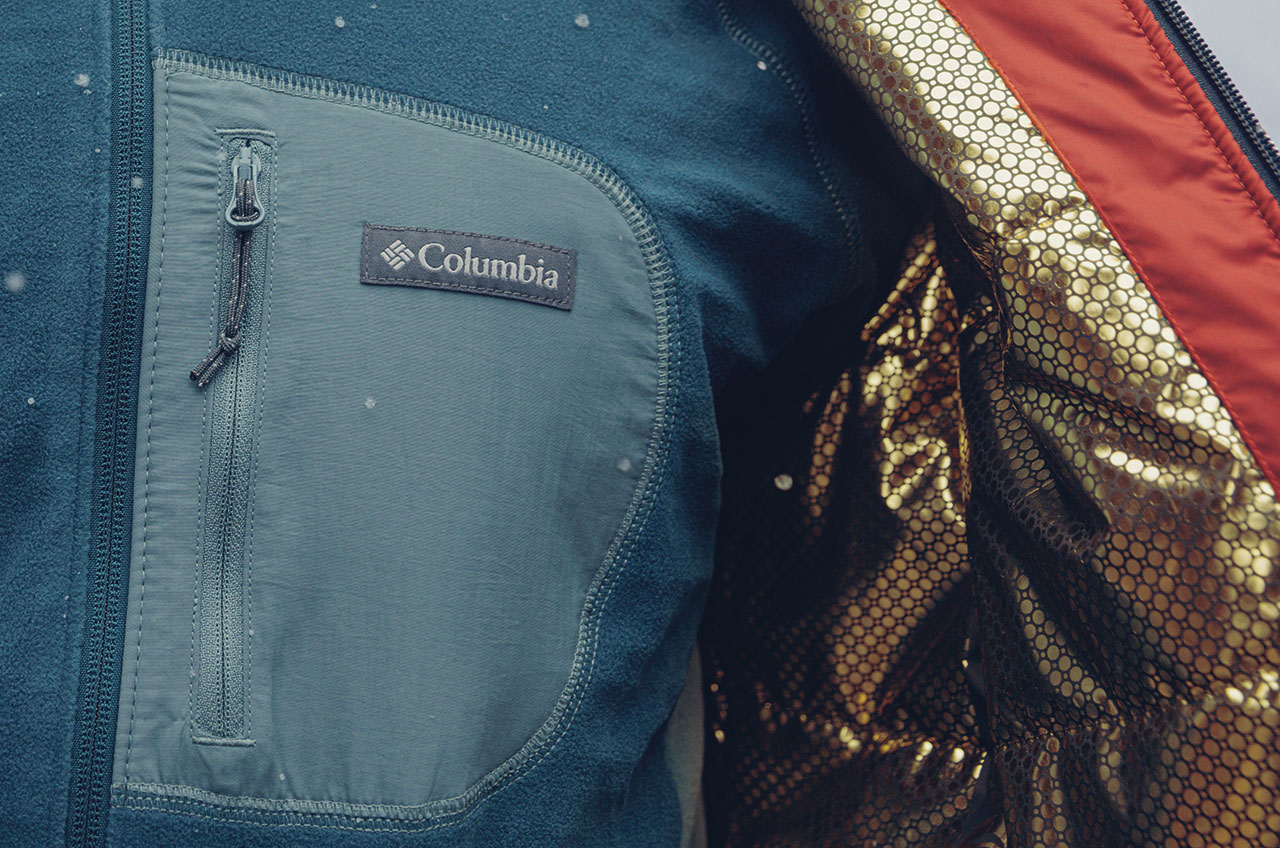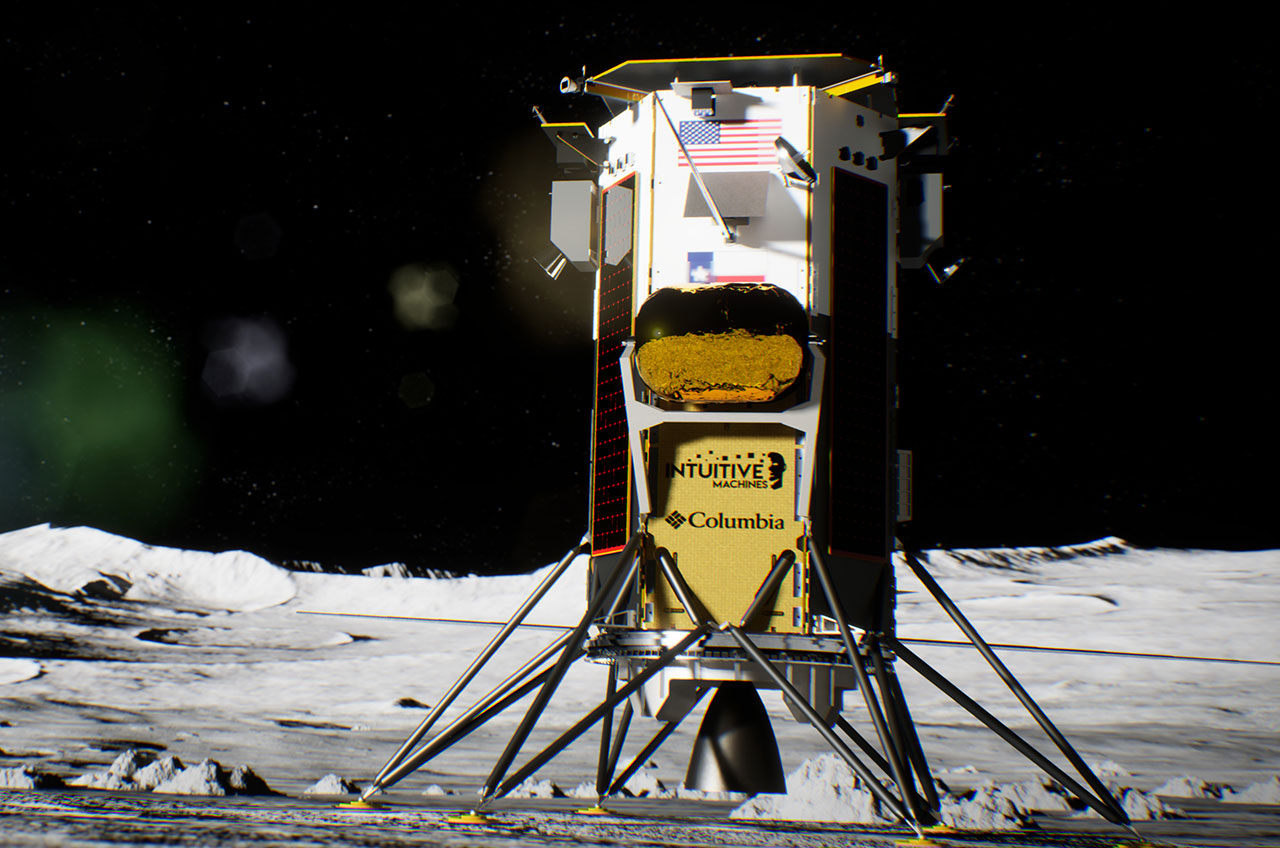Lunar lining: Columbia coat tech insulates Intuitive Machines' newly launched moon lander
'We realized immediately that this was a partnership that seemed to make sense.'

A technology used to protect the first astronauts to land on the moon is now on its way back to the lunar surface — and you may already have some of it hanging in your coat closet.
Intuitive Machines' Nova-C lunar lander "Odysseus" ("Odie" for short) will attempt to become the first U.S.-built commercial spacecraft to land on the moon when it tries for a touchdown near the lunar south pole on Feb. 22. The robotic probe, which lifted off Earth on Thursday (Feb. 15), will rely on its cryogenic propellant supply to power its descent to the surface. Protecting the propulsion tank from the extreme temperatures of outer space is an insulation based on what was first used by NASA's Apollo missions more than 50 years ago but has since been improved upon by Columbia Sportswear.
Related: SpaceX launches private 'Odysseus' lander on pioneering moon mission (video)
"They took the Kapton coating from Apollo and turned it into the reflective discs in their jackets," said Peter McGrath, chief operating officer at Intuitive Machines, in an interview with collectSPACE.com.
The same gold-dotted lining in Columbia's jackets and other apparel was borne out of the polyamide thermal blankets that were used to cover the Apollo lunar modules.
"We realized immediately that this was a partnership that seemed to make sense," said Haskell Beckham, vice president of innovation at Columbia Sportswear. "Once they described what they were doing and I described to them what we have in our line already for thermal reflective insulation, we realized that our material actually could provide a benefit to their lunar lander."
Intuitive Machines' Nova-C is one of several new U.S. robotic landers that exist or are in development as a result of NASA's Commercial Lunar Payload Services (CLPS) initiative. Rather than build its own lander, which as a government project would take longer and cost more, the space agency has turned to companies to land its science instruments on the moon while at the same time flying commercial payloads to make the mission profitable.
The Columbia Sportswear partnership is one such example on IM-1, the first flight of the Nova-C, which is heading for a landing at Malapert A, a crater located about 186 miles (300 kilometers) from the moon's south pole. Intuitive Machines used Columbia's Omni-Heat Infinity heat-reflective technology to cover the A2 closeout panel that is shielding the lander's cryogenic propulsion tank.
"The material that we use and have been using for over a decade in our jackets is very similar to what was what is currently used in the MLI [multi-layer insulation] blankets in the aerospace industry," said Beckham. "We have got a polyester fabric. The little dots are metallized, it's a multi-layer stack, but it is aluminum. And we have a layer on top of the aluminum, which in this case is a gold pigment."
More than just a commercial off-the-shelf solution, the use of Omni-Heat Infinity on Nova-C is also helping Columbia develop better clothing.
"We have learned so much after working with Intuitive Machines," Beckham said. "So what is in our original jackets is a single layer of reflective insulation lining. Once we were introduced to these MLI or multi-layer insulation blankets, we felt we could probably do that on our jackets, too. So if you look at our latest jackets, there is a lining that reflects your own body heat and there's also another layer of foil on the shell but the gold is facing in towards the body."
"This is effectively a multi-layer installation. On a per-weight basis, it's the warmest jacket Columbia's ever made," he said."
Even though Odysseus has yet to land on the moon, Intuitive Machines and Columbia are already working on incorporating Omni-Heat Infinity into the second Nova-C lunar lander.
"We are also partnering on the second mission," said Beckham. "We are talking about different materials and different places to put our installation materials on that lander as well."
"We are looking at how we can use the Columbia technology to keep our landers alive during the cold [lunar, 14-Earth-day] night," said McGrath. "We want to be able to isolate avionics systems that we need to keep warm. but we also need to keep them cool when we are using them during the day."
Columbia, which by coincidence shares the same name as the Apollo 11 command module, is promoting the connection between IM-1 and its jackets with a new section on its website. The company is also taking over the exterior of the entertainment arena Sphere in Las Vegas on Feb. 19 to highlight the role that Omni-Heat Infinity technology is playing throughout the history-making mission.
Follow collectSPACE.com on Facebook and on Twitter at @collectSPACE. Copyright 2024 collectSPACE.com. All rights reserved.
Breaking space news, the latest updates on rocket launches, skywatching events and more!

Robert Pearlman is a space historian, journalist and the founder and editor of collectSPACE.com, a daily news publication and community devoted to space history with a particular focus on how and where space exploration intersects with pop culture. Pearlman is also a contributing writer for Space.com and co-author of "Space Stations: The Art, Science, and Reality of Working in Space” published by Smithsonian Books in 2018.
In 2009, he was inducted into the U.S. Space Camp Hall of Fame in Huntsville, Alabama. In 2021, he was honored by the American Astronautical Society with the Ordway Award for Sustained Excellence in Spaceflight History. In 2023, the National Space Club Florida Committee recognized Pearlman with the Kolcum News and Communications Award for excellence in telling the space story along the Space Coast and throughout the world.



